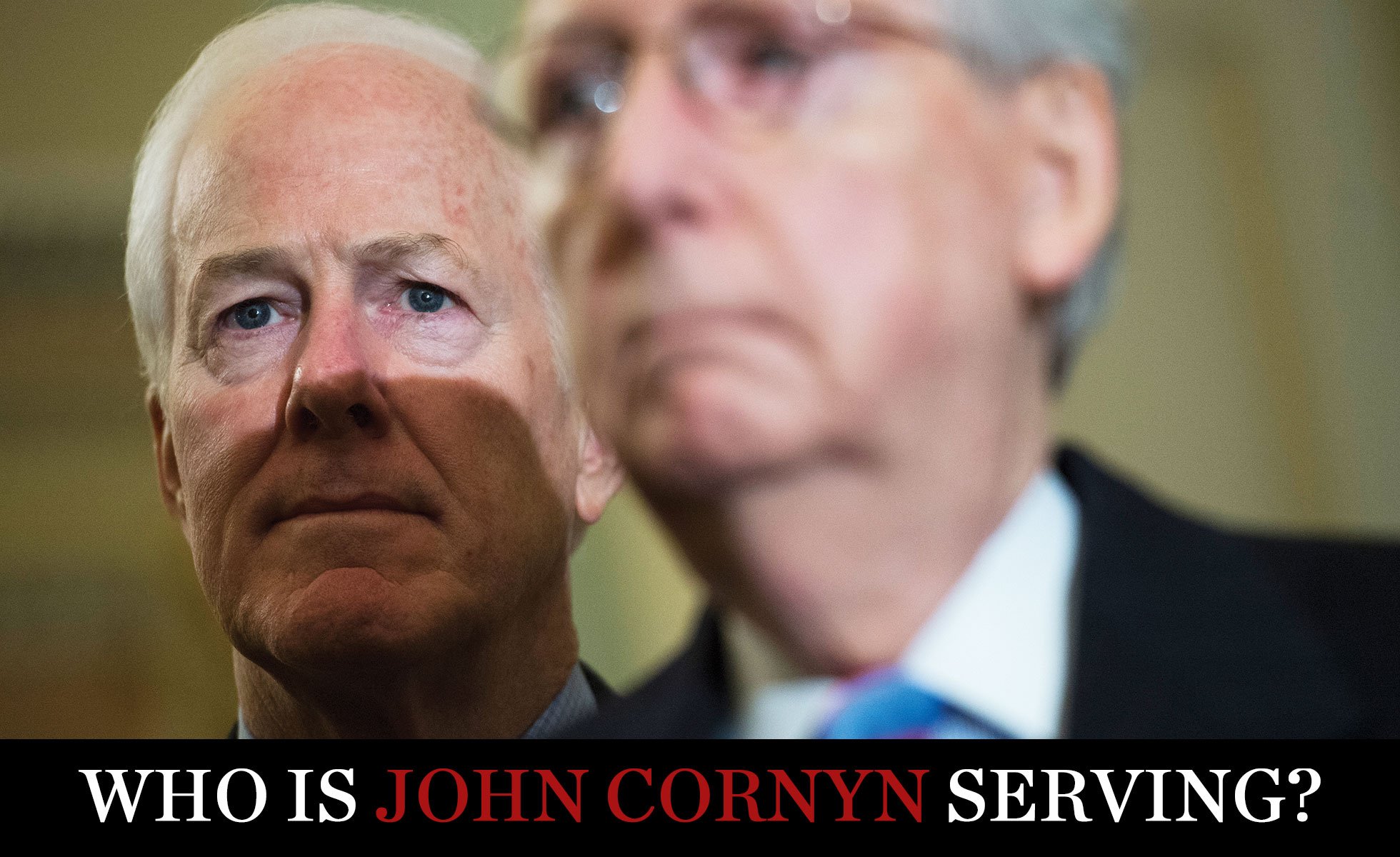
After 20 years in Washington, the senior senator from Texas has mastered the art of political subservience—first to the Republican establishment and now to Trump. It’s made him very powerful. But does it also make him vulnerable in 2020?
*
by Justin Miller
September 30, 2019
In 2012, Senate Minority Leader Mitch McConnell was facing an ascendant tea party faction and was leery of political insurrection. Which is why his new minority whip, John Cornyn, the senior senator from Texas, a state with the largest number of Republican voters and a leading exporter of ambitious conservative politicians to Washington, could have been a threat. But Cornyn was not your typical Texas politician. He was ambitious, sure, but not overtly power hungry.
As a fellow traveler of the establishment, Cornyn quickly made it known that he came in peace. A few weeks into their new relationship, he gave a birthday gift to his boss: a framed photo of McConnell, front and center, holding court at a press conference, with Cornyn and another top lieutenant standing behind him. There are thousands of photographs to this effect. Sometimes Cornyn stands behind him off his left shoulder, other times to his right or directly behind, causing his face to be hidden by McConnell’s mug on TV. A shame, really, given Cornyn, who is now 67, has those made-for-CSPAN looks: a tall frame and long, sober face topped with a distinguished head of white hair, senatorial in every sense of the word. He is a stark contrast to McConnell, with his testudinal features and utterly dull affect.
McConnell appreciated the sentiment of this particular snapshot. His new deputy was “a little out of focus and halfway in the shadow,” he fondly recalled. The message accompanying the photo read, “Happy birthday Mitch, I’ve got your back.” McConnell took it as a sign that Cornyn was not only humble and loyal, but also knew his place.
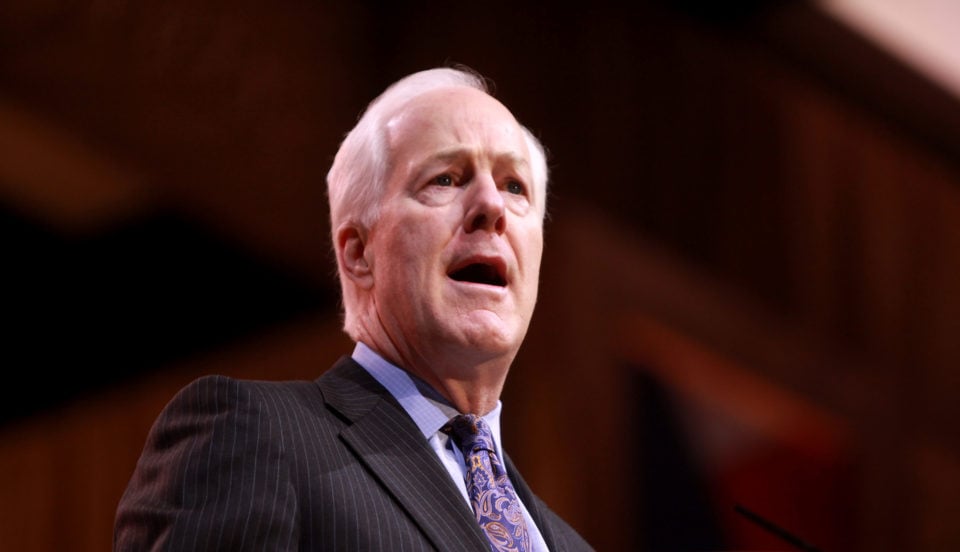
Cornyn has mastered the art of political subservience to the prevailing winds of his party and its leaders. He was first elected to the U.S. Senate in 2002 by promising to serve as an appendage of George W. Bush and has since meticulously climbed the ranks of power. While this approach has not made him a political star, it has won him a cast of powerful friends, who have transfused that power to him.
But as he approaches his 2020 reelection campaign, Texas Democrats have slapped a big target on the senator’s back. Several candidates have jumped into the race, convinced they can build on the party’s historic inroads in 2018 and win statewide, including Cristina Tzintzún Ramirez, a longtime progressive organizer.
It likely won’t be that simple. Some observers think that the 2018 results—fueled by a once-in-a-generation Democratic candidate and a highly divisive incumbent—are the equivalent of a 100-year political flood. And while Cornyn is a leading member of a party that has tied its political future to a polarizing president, keeping that president in power helps the party advance its core agenda. “It’s all about tax cuts and getting judges life appointments. It’s stopping the Pelosi agenda or whatever. That’s it,” said Brendan Steinhauser, a Republican operative who managed Cornyn’s 2014 campaign. “Nobody [in the party] is really thinking that far beyond 2020,” Steinhauser said.
Cornyn seems to be taking the race seriously. “We are, I think, no longer the reliably red state we have been,” he said in a recent interview with the Texas Tribune. “We are at risk of turning purple.” When the Observer sent an email requesting an interview, Cornyn’s Senate communications director responded only with a list of several past Observer articles critical of the senator. Approached in the U.S. Capitol by a reporter asking questions on behalf of the Observer, he joked, “Those are good friends of mine, I’m sure it’ll be a nice puff piece.”
Cornyn is intimately familiar with how to navigate changing political landscapes. He got in on the ground floor of Karl Rove’s Republican revolution in the 1980s and rose to state Supreme Court justice and then state attorney general in the 1990s.
If Rove was the architect of the modern GOP, a political project built on a synergy of hard-line conservatism and big business, Cornyn is a perfectly distilled product of that project. He has spent his entire career doing whatever it takes to protect and serve the Republican Party and its benefactors—but the political sins of that endeavor may have finally put his future in jeopardy.
I. The Beginnings
Born in Houston, Cornyn grew up in a military family and moved constantly. He graduated from an American high school in Japan, where he developed a reputation as a staunch conservative (he campaigned for George Wallace in his high school’s 1968 mock presidential elections). Cornyn went to college in San Antonio and got a degree in journalism. Turned off by the low salaries, he tried his hand at real estate before going to law school.
In 1977, Cornyn landed a job at a big law firm in San Antonio. That same year, Rove, a young political operative for the GOP, moved to the state. At the time, Texas was teeming with trial lawyers who saw the state as a great place to gamble on high-risk, high-reward plaintiff lawsuits. From medical malpractice to toxic torts, many trial lawyers got rich by sticking it to big business on behalf of the little guy. In turn, they used their fortunes to finance a sympathetic Democratic Party. Conservatives saw this as an abusive legal practice—which they derided as “jackpot justice” and the “lawsuit lottery”—that was driving business from Texas.
A decade later, Rove came up with a strategy to use tort reform—that is, making it harder for people to sue corporations, doctors, and employers and for plaintiff’s attorneys to make a windfall by placing caps on damages—as a way to unite his burgeoning Republican operation with wealthy business interests. The network of PACs, advocacy groups, and corporate donors that he assembled would be the political machine that drove the decimation of a dominant Democratic Party and the trial lawyers who funded it.
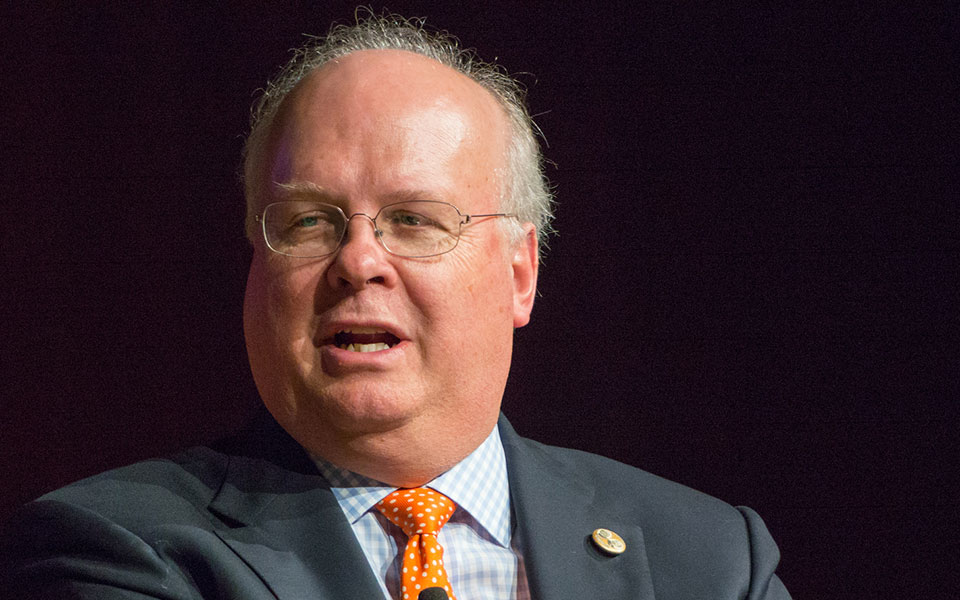
Cornyn’s distaste for trial lawyers took root in the courtroom, where he tried to defend doctors and insurance companies from malpractice and personal-injury lawsuits. He first met Rove in the early ’80s as they both became involved in judicial reform. He joined a group of Republican activists in town who were trying to chip away at the Democratic control of the courts. In 1984, Cornyn was recruited to run for an open district judge seat in San Antonio. He was only 32 but already had that distinguished head of white hair. He won the seat and developed a reputation as a straight-shooting judge with a pro-business record. By the late 1980s, that sort of political résumé was in high demand. Rove had mobilized his tort-reform movement and set his sights on the Texas Supreme Court, where the Democrats who dominated the bench were plagued by scandals.
In 1988, Rove got three Republicans elected to the nine-member court on a “clean slate” reform platform. Two years later, tort reformers recruited Cornyn to run for an open seat. He was seen as a competent judge with an inoffensive, even moderate, demeanor who could be reliably counted on to advance the business agenda from the high court.
Cornyn caught a big break when a formidable Democratic judge lost his primary to an unknown lawyer who benefited from sharing a name with the famous tap-dancing actor Gene Kelly. “It was a gift from the gods, and we took advantage of it,” said Bill Miller, an Austin lobbyist hired by Cornyn to run that campaign. He skated to victory and became a sitting Texas Supreme Court justice at the age of 38, providing the business lobby with a coveted majority.
Within a few years, Rove had defeated the trial lawyers and struck a death blow to the Democratic Party. Meanwhile, the Republicans who had promised to balance the scales of justice simply tipped them to the other side. The court churned out favorable decisions for the corporate law firms and businesses that helped finance their campaigns, just as the Democrats had done for the trial lawyers. Cornyn was seen as a more moderate and reasonable jurist, not an ideologue like some of his more conservative colleagues. Nonetheless, he helped facilitate a radical shift in legal precedent as the court chipped away at consumer rights, worker protections, and business regulations. By the late 1990s, the court had become a rubber stamp for the insurance, drug, and medical industries and ruled in favor of defendants 71 percent of the time, according to the legal watchdog Texas Citizen Action.
As Cornyn geared up for his first reelection, in 1996, Rove took him under his wing. By this point, Rove had succeeded in getting Republicans elected to nearly every statewide office and was grooming Governor George W. Bush for a presidential launch. His tort-reform ATM was pumping tens of millions of dollars into Republican war chests, which now included Cornyn’s. He raised $1.1 million largely from corporate law firms, major companies, and legal reform groups—almost half of his contributions were tied to interests with cases on the docket. He had a downtown Austin campaign office, staffers, and a statewide media campaign. Meanwhile, the Democratic Party was in utter shambles. Cornyn’s opponent was broke, resorting to photocopying old campaign flyers from a previous year. “Forget media. I still have to pay for my phone and stationery,” she told a reporter. “I don’t have a [political] machine. My machine broke.”
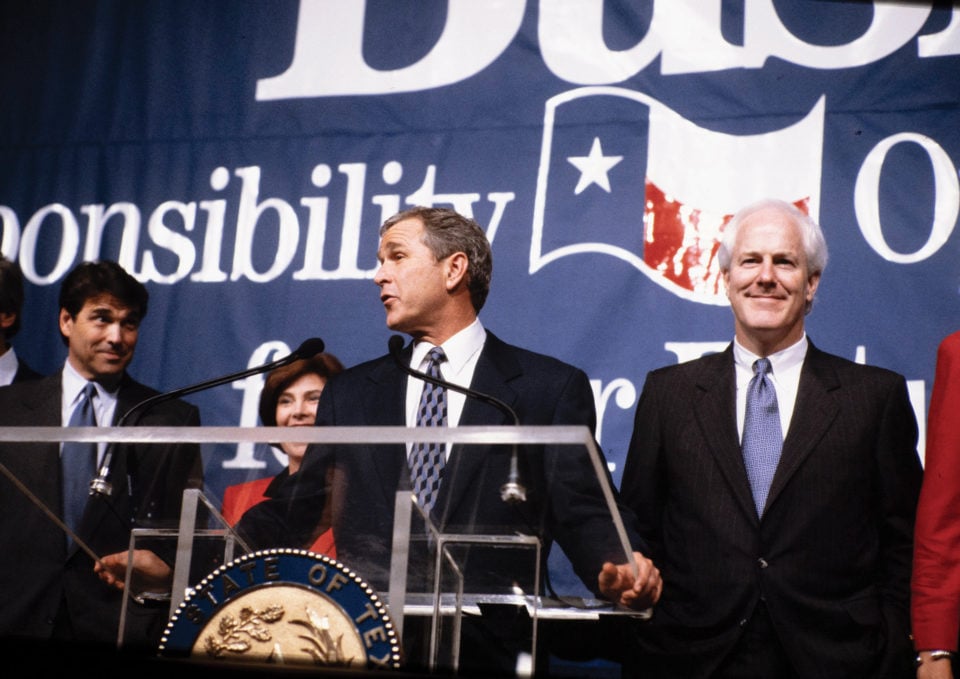
The Republican revolution in Texas was nearly complete. The only remaining statewide Democrat was Texas Attorney General Dan Morales, a rising political star who made a name for himself by taking on the tobacco industry, suing the major companies in 1996 to cover the state’s smoking-related Medicaid costs and to fund anti-smoking efforts. In doing so, he embarrassed both Bush, who was a close ally of the tobacco industry, and Rove, who moonlighted as a consultant for Philip Morris.
Morales enlisted a team of powerful trial lawyers—the “Big Five,” as they were dubbed—to lead the lawsuit. Per the agreement, the lawyers wouldn’t get paid unless they won. The Big Five forced a settlement with the major tobacco companies for a staggering $15.3 billion—the largest for a single case in American history. The lawyers, who were known to support Democrats, stood to earn at least $2 billion in fees for their work.
Rove was livid. He had spent 20 years building a money machine that financed the rise of the GOP. Rove feared that these lawyers would use their newfound billions to open up an unlimited credit line to Texas Democrats and unravel his progress.
He made it his personal mission to take down Morales, as recounted in Boy Genius, a book about Rove. To do that, he turned to Cornyn, convincing him to leave the bench and jump into the attorney general race. When Cornyn launched his campaign in the fall of 1997, Rove promptly enlisted him to lead a political sideshow denouncing the tobacco lawyers’ fees. Cornyn made the trek to the Texarkana federal courthouse where the case had just been settled and declared that he was intervening as a private citizen.
All our investigations in one place. Sign up for our longform email:
Cornyn denounced the Big Five’s fees as “outrageous.” He filed lawsuits and petitioned his former colleagues on the Supreme Court to block the payment of the fees, contesting that Morales never had the authority to sign such an arrangement.
His opponents saw it as a political stunt—“a transparent and desperate attempt by a third-string candidate to get publicity for himself,” as a Morales spokesperson put it. But bashing rich trial lawyers was good politics. Cornyn dragged the legal charade on for six months while he campaigned, eventually agreeing to drop his lawsuits but suggesting that he would open an investigation when he got elected. His path to victory opened up when Morales dropped a bombshell and opted not to run for reelection. (He would later plead guilty to falsifying documents in an attempt to cut a friend in on the tobacco fees.)
With Rove’s help, Cornyn snuck through the primary, launched relentless attacks against his runoff opponent, and eventually won the GOP nomination. To win the general, Cornyn vowed to be a friend to big business, hauling in more than $6 million largely from his corporate and tort-reform allies. That—along with a wildly popular Bush at the top of the ticket—helped him easily defeat Jim Mattox, an old-school progressive Democrat.
Cornyn was the first Republican state attorney general in Texas since Reconstruction and just one of about a dozen in the country. In the absence of federal action, state attorneys general—most of them Democrats—had begun aggressively enforcing consumer protection laws and rooting out corporate malfeasance. They launched lawsuits against polluters, lead-paint manufacturers, managed-care providers, pharmaceutical companies, and gun manufacturers.
This offended Cornyn’s judicial sensibilities. “We should not be making social change and establishing public policy through the courthouse instead of the statehouse,” Cornyn said in 1999. That year, he and a handful of other conservative state AGs launched the Republican Attorneys General Association (RAGA) with the purpose of electing pro-business state AGs and putting a stop to these lawsuits.
To finance its political operation, the group turned to the very industries that were threatened by those lawsuits. In January 2000, Cornyn sent out a fundraising letter touting an upcoming RAGA retreat at a swanky resort outside Austin. A $25,000 check got you into a private meeting with Cornyn and the other attorneys general in attendance, the letter said. RAGA pulled in more than $500,000 from the event, which attracted some 100 corporate bigwigs representing a litany of major companies—gun manufacturers, telecom giants, even Microsoft, which had pending antitrust litigation in 23 states.
The money was funneled into a nonfederal Republican National Committee campaign fund that would then disperse cash into state campaigns. RAGA refused to disclose which contributions were earmarked for their campaigns, making the money untraceable. By 2002, companies had pumped more than $5 million into the Republican account—with Houston-based Enron at the top of the list. “It was a slush fund. A shakedown. It was a corporate protection racket,” said Craig McDonald, whose watchdog group, Texans for Public Justice, closely tracked Cornyn’s career. “You could see that as soon as the thing had come into existence.”
Cornyn vehemently denied that RAGA’s political contributions influenced AGs. “Frankly, any suggestion or implication that they do is insulting and unfounded,” he told a reporter during a break at the retreat.
But throughout his tenure, Cornyn made decisions that benefited his campaign donors and those linked to RAGA. Less than a month after the retreat, he settled a lawsuit that Morales had filed against health insurance giant Aetna—which had recently funneled $75,000 into the RAGA-linked political account—for allegedly providing kickbacks to doctors who steered patients away from costly care. Cornyn sold it as a big win, listing several reforms that the company had agreed to make. But Aetna didn’t have to pay any fines and made no admission of guilt. Advocacy groups warned that it could give Aetna leverage in other lawsuits and said that the concessions in the settlement were riddled with loopholes.
As he had promised to his donors, Cornyn kept the state out of the industry-wide lawsuits sweeping the country. Cornyn also continued his crusade against the tobacco lawyers, launching an investigation and pushing to get them thrown out all together. He also severely weakened the state’s ability to prosecute complex cases—like the tobacco suit—that require outside expertise. The state could only hire outside plaintiff’s attorneys if they accepted an hourly wage.
By 2002, Cornyn had turned the attorney general’s office into a faithful ally of industry, bolstering Texas’ reputation as a big-business paradise. And by then, Rove’s Republican revolution had reached the White House. Cornyn had nowhere to go but up.
II. Mr. Cornyn Goes to Washington
In 2002, Texas’ former governor sat in the White House, and the state was solidly red. Cornyn, the anointed successor to legendary Republican Texas Senator Phil Gramm, had little difficulty beating Dallas Mayor Ron Kirk, his Democratic opponent.
Once in Washington, Cornyn took his marching orders from the Bush administration, voting with the president 96 percent of the time in his first four years, more than any other senator. He earned a reputation as one of the Senate’s most hard-line conservatives—especially on the Iraq War—and used a plum appointment on the Judiciary Committee to lead the fight for Bush’s right-wing judicial nominees, and to take up the mantle of social conservatism as he pushed for constitutional amendments banning marriage for same-sex couples and flag burning. But he wielded the role of conservative ideologue with his trademark judicial restraint. He made his points without fire-breathing rhetoric, he was unassuming and telegenic, and his colleagues liked him. Missouri Republican Roy Blunt, who serves in leadership with Cornyn, noted that despite his moderate affect, he’s a leader of the steering committee, Senate Republicans’ most conservative internal group. “He can make a forceful point without being overly assertive or in some way driving members away from the idea he’s trying to pursue.”
His ability to serve as the soft face of the hard right was seen as an asset by Republican leadership and helped him quickly rise through the party ranks. After the GOP lost its Senate majority in 2006, Mitch McConnell took the reins and Cornyn was elected to a leadership post—a rarity for a first-term senator.
When Barack Obama was elected president, Cornyn was a critical part of McConnell’s stonewalling of Democratic legislation. “He was the attack dog sent to the Senate floor every day,” recalled Jim Manley, who was then a top aide in Senate Majority Leader Harry Reid’s office. “He just railed against the Democrats’ agenda day in and out.” Cornyn was a partisan brawler who specialized in blowing up legislation, Manley said.
Obama had given Democrats a significant campaign cash edge, and Cornyn was tapped to run the National Republican Senatorial Committee (NRSC) and charged with lowering the fundraising deficit going into the midterms. It’s a grueling and thankless job. “You’ve gotta be either committed or out of your mind to do that,” said Senator John Kennedy, a Louisiana Republican. “That’s the most thankless job I can think of in the United States Senate.”
But Cornyn relished the opportunity to help McConnell and hit the fundraising circuit with enthusiasm, cashing in more than $110 million in checks that helped Republicans pick up six Senate seats in 2010. His colleagues were so impressed that they reelected him for a second term as NRSC chair. The leader was overjoyed, reportedly dubbing him “the best NRSC Senate chair Republicans have ever had.”
As Craig McDonald, of Texans for Public Justice, put it, “Cornyn learned how to be a good bagman in his rise in Texas.”
Cornyn predictably struck it rich in his home state. There was a long list of millionaires and billionaires who owe their immense wealth to the Texas oil and gas booms and would eagerly max out their contributions if it could help stop Obama and the Democrats’ socialist climate crusade. Indeed, by the end of his NRSC tenure, Cornyn had doubled the amount of money Senate Republicans raised from the oil and gas sector.
In just two cycles, he extracted more than $20 million from donors whose faithful support extends all the way back to the days of the Texas tort wars. About $1 million of that came from the River Oaks enclave of Houston, which in 2016 was home to eight of the country’s biggest Republican givers.
Cornyn also led the Republican effort to woo Wall Street away from Obama. After the president called bankers “fat cats” and began pushing financial regulatory reform, Cornyn began making the trip to New York twice a month to cash in on what he called Wall Street’s “buyer’s remorse.” “I just don’t know how long you can expect people to contribute money to a political party whose main plank of their platform is to punish you,” Cornyn said. By the end of 2012, Cornyn had tripled the amount the financial sector contributed to Senate Republicans and ascended to the position of minority whip. He had primed the money machine that would help Mitch McConnell finally secure his Senate majority in 2014.
III. Trumped Up
Donald Trump’s ascendance to the presidency posed a direct threat to the Republican Party that Cornyn had worked so hard for. Trumpism was an indictment not only of the Democratic leadership of Obama, but of the Karl Roves, the Mitch McConnells, and all the loyal torchbearers of Chamber of Commerce conservatism who thrive in the swamp. So the Republican establishment chose to do what it always does when powerful populist elements—from the far-right evangelicals to the tea party insurgents—come knocking at the door: welcome them inside.
The GOP’s ability to harness the political power of these fringe movements has been critical to advancing the party’s core plutocratic purpose: cutting taxes, deregulating industry, shredding the safety net, stacking the courts, and so on. Trump’s unexpected presidency was a chance to secure the spoils of power and run up the score; the prospect of four more years of judicial nominations and spending cuts is what keeps Republicans like Cornyn squarely behind Trump.
Now majority whip, Cornyn was tasked in 2017 with securing the largest spoil: Trump’s massive tax cut package. Behind closed doors, Cornyn masterfully cut deals with senators to ensure that the bill would pass. The result was a transformational redistribution of wealth to corporations and the ultrarich that Republicans promised would be paid for with magical levels of economic growth (it is actually expected to add at least $1 trillion to the federal debt).
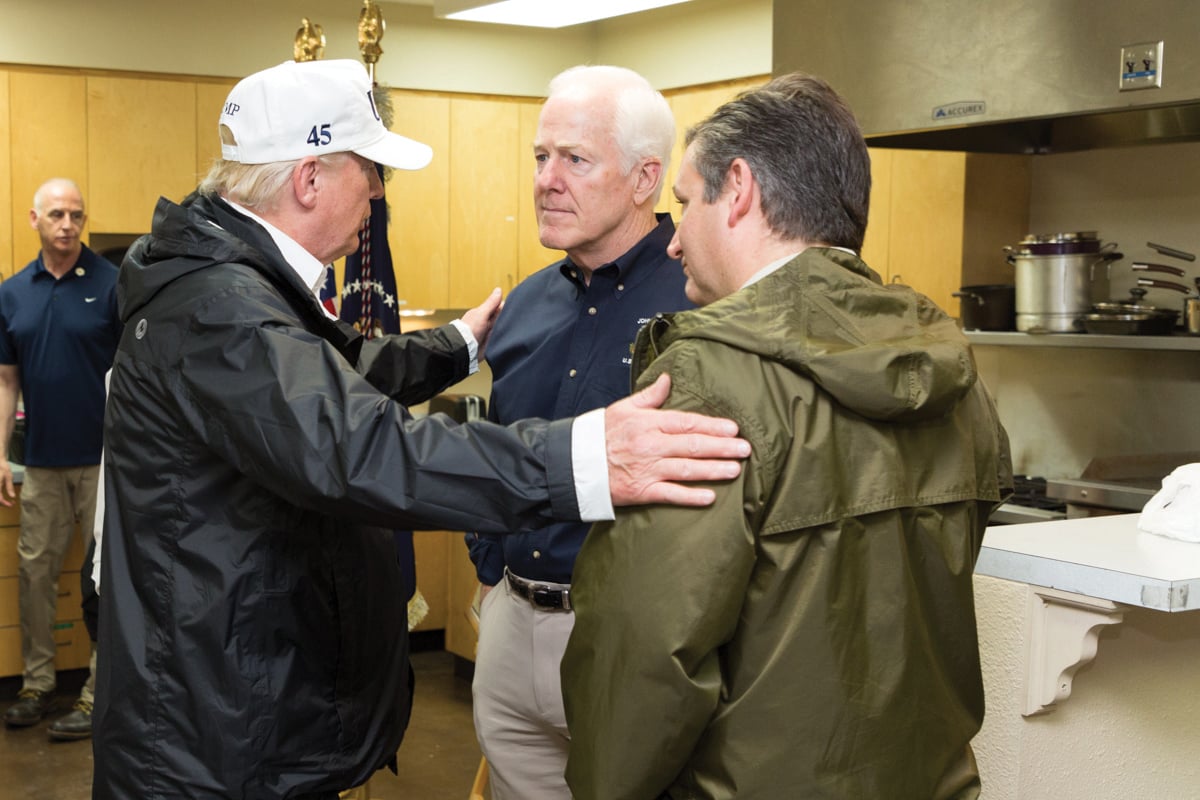
Along the way, Cornyn ensured that his friends in the Texas oil and gas industry who have lavished him with more than $3.5 million in political contributions over his career would get their fair share. Seventeen major oil and gas corporations, most based in Texas, would receive a combined one-time jolt of $25 billion. Republicans promised that money would trickle down to average Americans through pay increases and bonuses, but that hasn’t happened. In the months after the tax cuts were enacted, Houston’s major energy companies pumped a collective $9 billion into stock buybacks that enrich investors and executives. ConocoPhillips and Phillips 66 said the tax cuts had, as the Houston Chronicle reported, “no effect on employee wages, bonuses, or investment plans.” Cornyn also slipped in a provision at the last minute that ensured oil and gas pipeline operators—a sector composed of many GOP mega-donors—would maintain their preferential tax advantage. He was rewarded in 2018 with nearly $80,000 in contributions from pipeline companies—more than any other senator.
When Trump’s actions more explicitly harm Texas—like his trade wars that hurt Texas farmers; his threats to shut down ports of entry, which would cause billions of dollars in damage to the state economy; the border wall that would seize Texans’ private land and exacerbate flooding in Texas border towns—Cornyn will either acquiesce, equivocate, or carefully limit his objections to policy, not the president. Condoning Trump would only jeopardize the power he and his party have amassed. That raw calculus was on clear display last summer, when he resisted efforts in Congress to rein in Trump’s tariff power because, as he told reporters, “I don’t think this is a time to pick a fight with the president in the run-up to a midterm election.”
Cornyn is well aware that Trump is more popular with his party’s base than the politicians like him who run the party—even in Texas. At the state GOP convention in 2018, Cornyn reprised a version of his 2008 campaign video “Big John” to highlight his allegiance to “Big Don.”
The political calculations of his career—and his embrace of Trumpism—have been made with ambition in mind. There’s always one more rung to climb. He’s often pointed to as the logical successor to McConnell, and he’s made no secret that he wants that post. But McConnell has not shown any intention of stepping down. Meanwhile, last year, Cornyn was term-limited out of his position as whip, losing his swanky office and security detail. McConnell, however, invited him back into leadership as an unelected member.
Cornyn’s pursuit of power in Washington has apparently plateaued at a time when he could be at his most vulnerable heading into what may well be the most difficult reelection of his career. Powerful in Washington does not always translate to popular in Texas. Early polling suggests that most Texans don’t think much of anything about him. A Texas Tribune poll from June found that just 37 percent of those sampled approved of the job he’s doing, while 34 percent disapprove, and 29 percent have no opinion at all.
Cornyn has never faced a real challenge for his seat since first getting elected. But now as he heads into reelection tied to an unpopular president, Democrats are lining up for the chance to take him down. Meanwhile, Cornyn is reintroducing himself to the constituents who tend to forget he exists. He sees his case for reelection as fairly straightforward: he has used his power and influence to make the federal government more like Texas—lower taxes, fewer regulations, and more incentives for business. That’s the political argument that Republicans have used to win statewide elections in Texas for decades, and it’s how Governor Greg Abbott managed to coast to reelection in 2018 with 55 percent of the vote.
But the Republican Party has an unquenchable thirst for power. In the pursuit and maintenance of that power, the party has devolved into political nihilism. This paved the way for the inevitable rise—and the GOP’s embrace—of a racist, xenophobic authoritarian figure like Trump.
All along the way, Cornyn was there as a loyal partisan, a practitioner and beneficiary of Rove’s Republican takeover in Texas and Washington. And like the loyal partisan he is, Cornyn has stood firmly behind Trump, albeit just a little out of focus and halfway in the shadow. There will be no benefit of anonymity or obscurity in Texas, where he will soon find himself in focus and in the spotlight. “My legacy isn’t written yet. I’m not dead yet,” Cornyn said in the Capitol, before cutting the brief interview short. “I’ve gotta go.”
This article was published in partnership with The Intercept. Ryan Grim contributed reporting.
All our investigations in one place. Sign up for our longform email:
Read more from the Observer:
-
What the UAW Strike Looks Like, From Deep in the Heart of Anti-Union Texas: GM autoworkers from the Arlington plant, one of the company’s most profitable, are part of the largest strike against a U.S. business since 2007.
-
The Green New Deal Can Exist in Texas: The state has already shown what can be accomplished when renewable energy is prioritized. Now, Texans want to take action. Do lawmakers?
-
They Persisted: An unprecedented number of first-time female candidates ran for office in Texas in 2018—and lost. Now, many of those women are running again.







